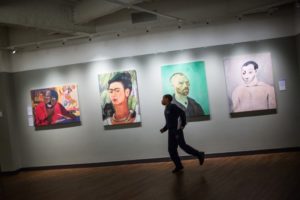What happens if you take poor urban students and send them to schools purposely designed to look like lavish art museums? The creators of the Ascend Learning network of charter schools in Brooklyn believe the answer is that wonderful things happen—including a great deal of learning.
Ascend’s administrators want the 2,800 Black and Hispanic students at Ascend’s seven schools to attend palaces that look like the fancy private schools attended by their wealthy peers—and not the ugly, crumbling prisons that most old urban schools typically resemble.
Ascend’s CEO Steven F. Wilson, who founded the charter school network in 2007, told writer Sara Neufeld of The Hechinger Report he had always been disgusted by the way many public schools look—pointing out that they still have bars on their windows while crime is dropping.
“I’ve always found it peculiar that our urban schools should so often look like the worst in our society rather than an expression of our aspirations for our children,” he said.
So he designed two of the middle schools to look like art galleries, with high-quality prints of great works on the walls like Georgia O’Keeffe’s “Brooklyn Bridge,” Albert Bierstadt’s “In the Mountains,” and Aaron Douglas’ “Song of the Towers.”
Although more than 80 percent of the students receive free or reduced-price lunch, Wilson believes his students shouldn’t be treated like they’re poor. So he designed a curriculum to resemble the approach he was immersed in as a student at Harvard.
That means reading great literature in the context of a broad liberal arts education and not the mind-numbing focus on test scores.
“I don’t in any way discount that [focus on test scores], but our purpose is much deeper,” Wilson, 55, told Neufeld. “It’s to equip our students with the broad capacities that can take them anywhere in life, whatever they want to do and whatever a changing world brings them.”
He said the ability to separate fact from opinion, to think rationally, and to have an aesthetic sensitivity “are the hallmarks of an educated person.”
To help him in his creation, he hired in 2010 a consultant named Elizabeth Hun Schmidt, a literary critic with a doctorate in American literature who had been a college professor. She told Neufeld she got inspired by elite private academies, high-performing public schools, and Wesleyan University, her undergraduate alma mater.
One day Schmidt and Wilson took a trip to visit the Ross School, a boarding school in the Hamptons, and saw high-quality replications of famous paintings covering the walls. When she saw it, Schmidt thought, “Oh my God. These kids go to school in a museum.”
Schmidt’s collection is up to 69 high-quality works, allowing her to put prints by van Gogh and Picasso alongside artists from the Harlem Renaissance and Civil Rights movement.
Neufeld described Ascend’s five school buildings as “visually stunning.” Wilson purposely didn’t get big private dollars for his operating budget because he wanted to prove that one could conceivably replicate an Ascend with the same money all public schools receive.
But that philosophy only extended to the operating budget, not the facilities. According to Hechinger, he persuaded a landlord to construct two buildings and got Goldman Sachs and other investors to loan a developer more than $45 million to restore a historic abandoned theater that now houses three Ascend schools.
Ascend’s administrators believe so strongly in the arts that they incorporate it throughout the curriculum. Students take art and music classes, and might find Pieter Bruegel’s famous painting “Landscape with the Fall of Icarus” used in fifth-graders for a lesson on the myth of Icarus and Daedalus.
In most of the nation’s public schools, the arts are slowly disappearing because of budget cuts and a singleminded focus on the state standardized tests. But at Ascend, they are sticking to the arts. The Common Core education standards include a significant focus on the arts, which educators hope might bring about an arts renaissance.
What kind of results are they getting? Good, but not great. Last year, according to Neufeld, Ascend schools did outperform other public schools in their neighborhoods and, in some grades and subjects, beat city averages. But only a quarter to a third of students at Ascend’s schools met the tough new Common Core proficiency standards.
Administrators think the results will get better over time, but aren’t abandoning their philosophy.
Crystal Lane, a seventh-grade humanities teacher at Brooklyn Ascend Charter, told Neufeld that she can still mix in test-prep skills while reading Emily Dickinson’s poetry and Henry David Thoreau’s Walden. She compared it to her previous school in the Bronx, where she said students often read sample passages to mimic test questions, not real books.
“We care about the test, but we know that’s not all there is to life,” she said. “This is how education should be done.”


